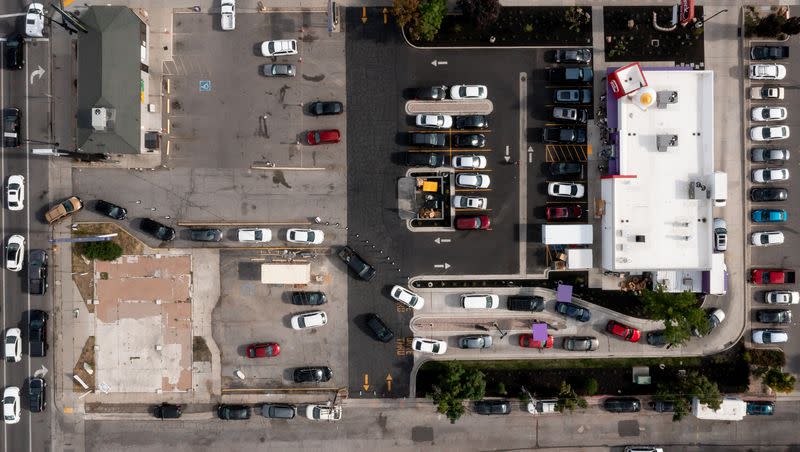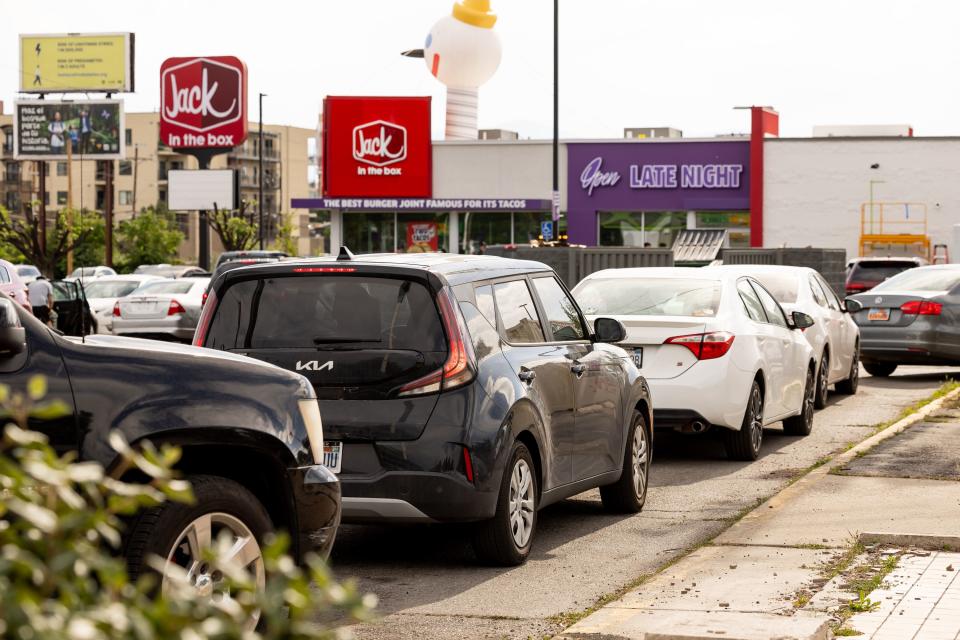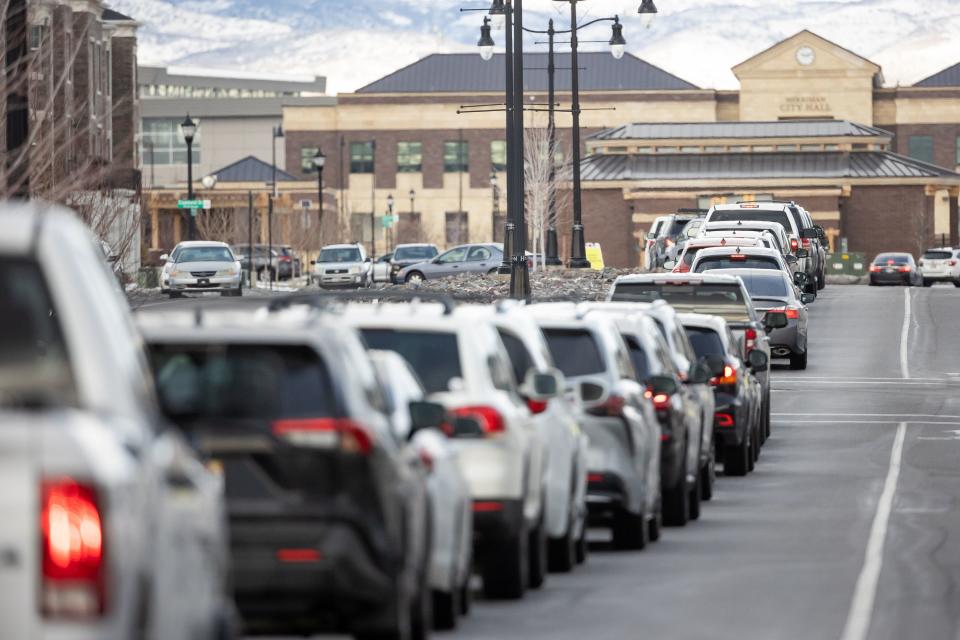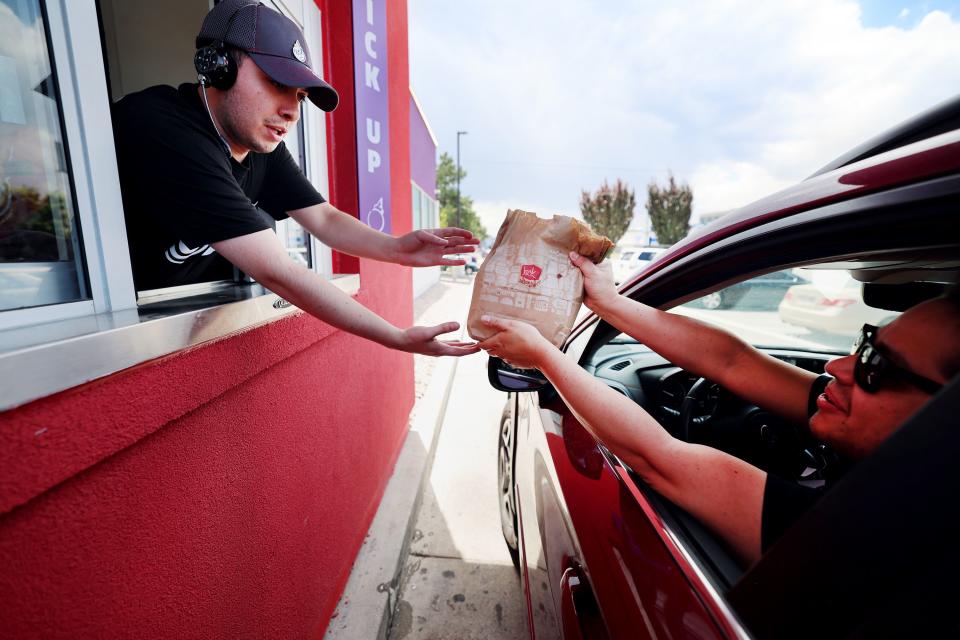Drive-thrus: Convenient or neighborhood nuisance?

The Salt Lake City Council, with the goal of enhancing the walkability of Sugar House, is considering an ordinance that would prohibit new drive-thru facilities in the neighborhood.
“I think this is great. I think here are parts of our community where drive-thrus make sense, and Sugar House is not one of them anymore,” said Council Chairman Darin Mano during a recent meeting.
“Sugar House is, in a lot of ways, becoming a model walkable, transit-connected community,” Mano said.
The proposed change would apply only to Sugar House, although other areas of the city are feeling the impacts of drive-thrus that, while convenient and arguably lifelines during the pandemic, congest traffic, discourage walking and contribute to air pollution while cars idle in queues.
An oft-cited example of such congestion has been the Chick-Fil-A along 2100 South in the heart of the Sugar House district, although the fast-food restaurant has taken steps to relieve the bottleneck.
Recently, the return of Jack in the Box to Salt Lake City snarled traffic along 2100 South, when the California-based fast food chain opened an outlet at 61 E. 2100 South. Some early reports said lines 60 cars long congested the already busy intersection. Similar issues occurred in South Jordan and elsewhere when Raising Cane’s opened in the state.

The Salt Lake City Council could vote on the Sugar House proposal as soon as Aug. 15, following a public hearing at 7 p.m. in the council chambers on Aug. 8. If the council approves the proposal, it will join a number of cities reconsidering this land use, which “came of age in car-crazy California in the 1950s,” according to the Smithsonian’s National Museum of American History. By the 1970s, drive-thru windows had a firm toehold nationwide.
Several cities across the country have already imposed prohibitions on new drive-thru facilities. Minneapolis; Fair Haven, New Jersey; and Orchard Park have banned new drive-thrus in recent years. In 2019, Long Beach, California, passed temporary moratoriums blocking new developments, according to CNN.
Next month, the Atlanta City Council will consider a ban in the city’s BeltLine area, 22 miles of unused railroad tracks that circle the core of its in-town neighborhoods.
While many argue that drive-thru establishments, whether fast-food restaurants, pharmacies, dry cleaners or coffee shops, are convenient, University of Utah research points to the hyperlocal health risks to workers posed by idling motor vehicles.

The study was conducted following reports of wait times of up to four hours at drive-thru COVID-19 testing sites in early January 2022.
The study quantified PM2.5 concentrations at three COVID-19 testing sites and compared them against nearby regulatory air quality sensors. PM2.5 describes fine inhalable particles, with diameters that are generally 2.5 micrometers and smaller, according to the EPA.
While the COVID-19 testing sites were generally farther away from large pollution sources than the regulatory sensors, and generally had lower PM2.5 concentrations, on testing days during atmospheric inversion periods, the PM2.5 readings were comparable on testing days during atmospheric inversion periods.
“Our findings suggest that traffic-related emissions, from both idling and added traffic to and within the COVID-19 testing sites are the cause of the observed increased PM2.5 concentrations. The impact of stagnating pollution from hyperlocal sources is a concern, particularly for staff working at high-traffic facilities, including drive-throughs,” according to findings.
“While this study focused on drive-through COVID-19 testing sites, the amount of drive-through facilities, including food establishments, banks, and pharmacies, among others, is non-trivial and this number has increased as a result of the COVID-19 pandemic. As important as it is to focus on ambient air quality impacts, the health of the workers staffing these facilities must be taken into consideration as well,” the study states.
The study’s lead author, Daniel Mendoza, research assistant professor of atmospheric sciences at the University of Utah, said while people tend to blame poor air quality on industry, in neighborhoods far from major roadways or other emitting sources, individuals’ activities contribute to local air pollution whether they are idling their car in a drive-thru line to purchase fast food or using a gasoline-powered lawn mower or leaf blower to tidy up their yard.
“These are things that we don’t often talk about. It’s a lot easier to point the finger and then say, ‘Oh, industry did this,’ or the perfect target recently has been the Inland Port. ... But the reality is, if you live far away enough, and you don’t live next to one of these large facilities, well, most likely, you’re a substantial contributor to your local air pollution,” he said.
Even though the proposed Sugar House ordinance was proposed over concerns with congestion conflicting with promoting a walkable community, Mendoza said other benefits are curbing traffic congestion, which contributes to air pollution, and enhancing safety.
When traffic backs up, motorists tend to wend through busy streets, which can pose risks to pedestrians and bicyclists “especially during rush hour, which of course coincides with dining hours. That tends to be something that we try to look at in terms of not just the air pollution side, but also the safety side,” he said.


